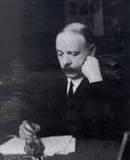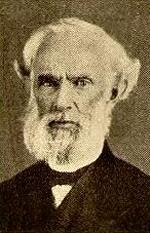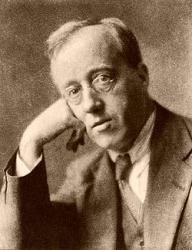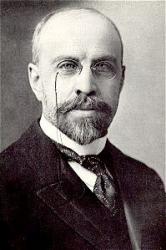Planning worship?
Check out our sister site, ZeteoSearch.org,
for 20+ additional resources related to your search.
- |
User Links
Person Results
John T. Layton
Person Name: J. T. Layton Composer of "LAYTON" in The African Methodist Episcopal Hymn and Tune Book
John T. Layton
S. Y. Harmer
1809 - 1884 Person Name: Rev. S. G. Harmer Author of "Rest for the Weary" in Beulah Songs Harmer, Samuel Young, son of Samuel Harmer, a member of the Society of Friends, was born at Germantown, Pennsylvania, Dec. 9, 1809. In 1827 he joined the American Methodist Episcopalian Church, and was engaged for several years as a Sunday School teacher and superintendent. In 1842 he became a local preacher of that body, and, in 1847, was admitted into the ministry. He has held appointments in Philadelphia and Iowa. His well-known hymn "In the Christian's home in glory" (Heaven) was written in 1856 for a camp-meeting collection which the Rev. John Gladding was then compiling. It has been slightly altered, and set to music by the Rev. W. McDonald of Boston, Massachusetts. (For these details we are indebted to Dr. Hatfield's Poets of the Church N. Y., 1884.)
-- John Julian, Dictionary of Hymnology, 1907
S. Y. Harmer
Charles Wood

1866 - 1926 Person Name: Charles Wood, 1866-1926 Arranger (version 1) of "IRIS" in Complete Anglican Hymns Old and New
Charles Wood
Love H. Jameson

1811 - 1892 Person Name: L. H. Jameson Author of "The Angels' Welcome" in The Gospel Call Born: April 17, 1811, Jefferson County, Indiana.
Died: April 12, 1892, Indianapolis, Indiana.
Buried: Crown Hill Cemetery, Indianapolis, Indiana.
Love Humphreys Jameson was born in Jefferson County in what was then the Territory of Indiana on May 17, 1811, the son of Thomas Jameson. Thomas had moved from Virginia to Kentucky around 1800 and later to the Indiana Territory in 1810 or early 1811. Thomas’s parents were members of the Calvinistic Kirk of Scotland and his wife’s parents held the views of the Church of England, but the family became Christians in 1816 with Love’s father and mother being baptized by John McClung, a young associate of Barton Warren Stone. Love, whose education was attended with all the difficulties associated with frontier life and was mostly under the tuition of his parents, was baptized in the fall of 1829 during a protracted meeting with Beverly Vawter and then preached his first sermon that same year on Dec. 25, following which he began preaching the gospel regularly.
From 1830 to 1834, Jameson taught school during the winters and made preaching trips in the summers. One of his mentors was Walter Scott, with whom he frequently travelled and worked. Moving to southern Ohio, in 1834, he, along with Scott, attended the famous debate of 1837 between Alexander Campbell and Bishop Purcell at Cincinnati, OH. In addition, he wrote frequently for Campbell’s paper, The Millennial Harbinger, in which Campbell spoke of him as the brother “whose praise is in all the churches in Indiana.” After preaching at various churches in Hamilton County, OH, Jameson worked with the church in Dayton from 1835 to 1837, when he married Elizabeth M. Clark. Also, in the closing years of B. W. Stone’s life, Jameson often accompanied the elderly preacher on his journeys. In 1840 he returned to Indiana and located at Madison, IN, the following year. His wife died of an apoplectic stroke suddenly soon afterwards, and he married Elizabeth R. Robinson in 1842, moving to Indianapolis, IN, which became his headquarters for the rest of his life.
In 1845, Jameson was asked, along with John O’Kane, to evangelize in the southwestern part of the state. Then after 1854, he made regular preaching trips into Ohio, Kentucky, Western Missouri, Illinois, New York, and even portions of New England. “There is a Habitation” was penned about 1860, with both words and original music by Jameson, but it never achieved any degree of popularity because of its slow, ponderous, torpid melody. The song as we know it was first published under the title, “O Sion, Sion,” in the New Christian Hymn and Tune Book, Part II, compiled at Cincinnati, OH, in 1882 by James Henry Fillmore. Jameson, who also provided the lyrics for “Night, With Ebon Pinion,” died ten years later, on May 1, 1892, in Indianapolis.
--hymnstudiesblog.wordpress.com
Love H. Jameson
E. J. Hopkins

1818 - 1901 Person Name: E. Hopkins Arranger of "JOHN BROWN" in The New Canadian Hymnal Dr Edward John Hopkins MusDoc United Kingdom 1818-1901. Born at Westminster, England, the son of a clarinetist with the Royal Opera House orchestra, he became an organist (as did two of his brothers) and a composer. In 1826 he became a chorister of the Chapel Royal and sang at the coronation of King William IV in Westminster Abbey. He also sang in the choir of St. Paul’s Cathedral, a double schedule requiring skill and dexterity. On Sunday evenings he would play the outgoing voluntary at St. Martin’s in-the-field. He left Chapel Royal in 1834 and started studying organ construction at two organ factories. He took an appointment at Mitcham Church as organist at age 16, winning an audition against other organists. Four years later he became organist at the Church of St. Peter, Islington. In 1841 he became organist at St. Luke’s, Berwick St., Soho. Two Years later he was organist at Temple Church, which had a historic organ (built in 1683). He held this position for 55 years. In 1845 he married Sarah Lovett, and they had four sons and five daughters. He was closely associated with the Bach Society and was organist for the first English performances of Bach’s St. Matthew Passion. In 1855 he collaborated with Edward Rimbault publishing “The organ, its history and construction” (3 editions 1855-70-77). In 1864 he was one of the founders of the “College of organists”. In 1882 he received an honorary Doctorate of Music from the Archbishop of Canterbury. He composed 30+ hymn tunes and some psalm chants, used by the Church of England. He died in London, England.
John Perry
E. J. Hopkins
S. Baring-Gould

1834 - 1924 Person Name: Rev. S. Baring-Gould Author of "My Lord, in Glory Reigning" in Our Song Book Baring-Gould, Sabine, M.A., eldest son of Mr. Edward Baring-Gould, of Lew Trenchard, Devon, b. at Exeter, Jan. 28, 1834, and educated at Clare College, Cambridge, B.A. 1857, M.A. 1860. Taking Holy Orders in 1864, he held the curacy of Horbury, near Wakefield, until 1867, when he was preferred to the incumbency of Dalton, Yorks. In 1871 he became rector of East Mersea, Essex, and in 1881 rector of Lew Trenchard, Devon. His works are numerous, the most important of which are, Lives of the Saints, 15 vols., 1872-77; Curious Myths of the Middle Ages, 2 series, 1866-68; The Origin and Development of Religious Belief, 2 vols., 1869-1870; and various volumes of sermons. His hymns, original and translated, appeared in the Church Times; Hymns Ancient & Modern, 1868 and 1875; The People's Hymnal, 1867, and other collections, the most popular being "Onward, Christian soldiers," "Daily, daily sing the praises," the translation "Through the night of doubt and sorrow," and the exquisite Easter hymn, "On the Resurrection Morning."
His latest effort in hymnology is the publication of original Church Songs, 1884, of which two series have been already issued. In the Sacristy for Nov. 1871, he also contributed nine carols to an article on "The Noels and Carols of French Flanders.” These have been partially transferred to Chope's and Staniforth's Carol Books, and also to his Church Songs.
--John Julian, Dictionary of Hymnology (1907)
==================
Baring-Gould, S., p. 114, i. Other hymns in common use are:—
1. Forward! said the Prophet. Processional. Appeared in the New Mitre Hymnal, 1874.
2. My Lord, in glory reigning. Christ in Glory. In Mrs. Brock's Children's Hymn Book, 1881.
3. Now severed is Jordan. Processional. Appeared in the S. Mary, Aberdeen, Hymnal, 1866, the People's Hymnal, 1867, &c.
--John Julian, Dictionary of Hymnology, Appendix, Part II (1907)
S. Baring-Gould
Gustav Holst

1874 - 1934 Person Name: Gustav Theodore Holst (1874-1934) Composer of "SHEEN" in Common Praise (1998) Gustav Holst (b. Chelteham, Gloucestershire, England, September 21, 1874, d. London, England, May 25, 1934) was a renowned British composer and musician. Having studied at Cheltenham Grammar School, he soon obtained a professional position as an organist, and later as choirmaster. In 1892, Holst composed a two-act operetta, which so impressed his father that he borrowed the money to send Holst to the Royal College of Music. Severe neuritis in his right hand later caused him to give up the keyboard, and Holst turned to the trombone and composing. In 1895 Holst met Ralph Vaughan Williams, and the two became lifelong friends. Vaughan Williams helped Holst land his first job as a singing teacher. Holst became very interested in Indian and Hindu culture, and composed a number of operas translated from Sanksrit myths. These were not received well in England, however. Holst is best known for his composition, The Planets, as well as
Gustav Holst
James M. Gray

1851 - 1935 Author of "Who is the King of Glory?" in The Voice of Thanksgiving Born: May 11, 1851, New York City.
Died: September 21, 1935, Passavant Hospital, Chicago, Illinois.
Buried: Woodlawn Cemetery, New York City.
Gray accepted Christ at age 22. He was educated at Bates College, Lewiston, Maine (Doctor of Divinity), and the University of Des Moines, Iowa (Doctor of Laws). In 1879 he became Rector of the First Reformed Episcopal Church in Boston, Massachusetts, where he served 14 years. He then became dean (1904-25) and president (1925-34) of the Moody Bible Institute, Chicago, Illinois, and directed publication of four editions (1921-28) of the Voice of Thanksgiving, official hymnal of the Institute.
A conservative theologian, Gray was one of seven editors of the popular Scofield Reference Bible. He was a fine scholar and excellent Bible teacher, but his interests went beyond mere academics. He promoted the Sunday School, and took an interest in civic affairs and patriotic causes. He backed efforts at social betterment, supported Prohibition, and wrote about 20 books
--www.hymntime.com/tch/
James M. Gray
Charitie Lees Bancroft
1841 - 1923 Person Name: Charitie Lees de Chenez Author of "The King of Glory Standeth" in The Hymnbook Bancroft, Charitie Lees, née Smith, daughter of the Rev. Sidney Smith, D.D., Rector of Drumragh, County Tyrone, Ireland; was born at Bloomfield, Merrion, in the county of Dublin, June 21,1841; and married, in 1869, to Arthur E. Bancroft. Her hymns have appeared in periodicals, Lyra Britannica, Bishop Ryle's Spiritual Songs, and other collections, and also as leaflets. The following have come into common usage:—
1. O for the [a] robes [robe] of whiteness. Heaven desired. This favorite children's hymn was 1st pub. as a leaflet in 1860. In 1867 it was included in Lyra Britannica, and thence has passed into several collections in Great Britain and America.
2. The King of glory standeth. Christ the Saviour. Contributed in 7 stanzas of 8 1ines to the Lyra Britannica, 1867, and entitled "Mighty to save." In the Hymns & Songs of Praise, N. Y., 1874, No. 1196, it begins with stanza iii., "He comes in bloodstained garments."
3. Before the throne of God above. The Advocate. Dated 1863, and given in Spurgeon's Our Own Hymn Book, 1806, Laudes Domini, N. Y., 1884.
In 1867 Mrs. Bancroft's hymns were collected and published as Within the Veil, by C. L. S.
-- John Julian, Dictionary of Hymnology (1907)
==========================
De Chenez, Charitie L. [Bancroft] née Smith, widow of Arthur Bancroft, p. 109, ii., is by a second marriage Mrs. De Chenez.
--John Julian, Dictionary of Hymnology, New Supplement (1907)
========================
She was apparently widowed twice. She died in Oakland, California, in 1923, at the age of 82, bearing the name Charitie de Cheney (or Chenez) - Dianne Shapiro
Charitie Lees Bancroft


 My Starred Hymns
My Starred Hymns


